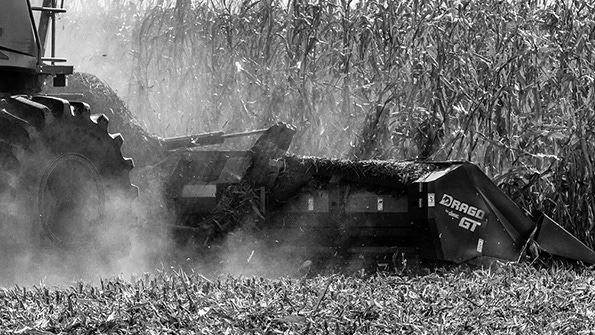July 6, 2016

Sponsored Content
Conducting a thorough inspection of your combine before you turn a wheel this fall can help prevent costly and time-consuming maintenance issues when corn harvest arrives.
There’s a cost balance to maintain when determining whether components will last through harvest. “As a farmer, I don’t like to guess. It’s a difficult decision to look at a part and say whether it’s going to make it through the season. But, we try to make it an educated guess,” says Fenton, Iowa, farmer and Dragotec USA president Dennis Bollig. “There’s a cost to replacing it too soon. You don’t want to replace it too long before it wears out. But, downtime is expensive, too. You want to make sure you’re getting the full life and value out of your parts.”
A thorough inspection begins with a look back to field conditions last fall. If you faced a wet harvest, mud may have built up on different components, creating grain loss potential. With drier conditions, you have a lot more dust to clog air filters, making it important to blow off that dust with an air compressor or leafblower. This is more effective in the fall, however, as dust settles and gathers moisture while stored during the off-season.
Another key part of the process, Bollig adds, is getting a good idea of the weather conditions you’ll face during harvest, as that can help determine what maintenance issues you’re more likely to face.
I) Electronics
The latest electronics and diagnostics often require a trained eye when inspecting your combine. It’s a good idea to have a yearly inspection by an experienced technician who can check the condition of your electronics and any past sensor fault code data to determine any potential issues the coming harvest. And, a common issue with any machinery stored for long periods of time can be especially damaging to electronic components, wiring and sensors, says Iowa State University Extension agricultural engineer Mark Hanna. “It’s probably been 10 or 11 months since you’ve run that machine, so it’s important to watch for rodent damage.”
II) Fluids
Any fuel and oil may need to be drained and replaced if it’s been in the combine for a while, according to Hanna. It’s also important to make sure engine coolant has enough working life left to keep engine temperatures in the optimal range. And, all bearings and gearboxes should be at their oil or grease capacity before harvest starts.
III) Chains and friction points
The loosening and subsequent failure of chain-driven components can have big impacts elsewhere on the combine, making them important areas of focus during a combine inspection. The corn head drive system is another area to inspect carefully. Lost efficiency is another concern with these components, as the more wear they incur, the less efficiently they perform.
IV) Threshing and auger components
Even the smallest damage in a concave or rasp bar can influence harvest efficiency and potential yield loss. “In the threshing and separation area, look for relatively minor damage,” Hanna says. “If something’s dinged or banged up, it needs attention.” It’s also important to make sure your feederhouse drum and chain tension are set correctly for the crop you’re harvesting.
Grain quality consequences
Beyond combine performance, grain quality can suffer if your combine’s not performing optimally, Hanna adds. “Grain tends to go out of condition faster if you’re not careful on your settings on your combine.”
For more on a successful combine preharvest inspection, contact your local service technician or dealership. For more information on Drago corn heads, contact Dragotec USA by phone at (888) 789-2723 or at www.dragotec.com.
You May Also Like




